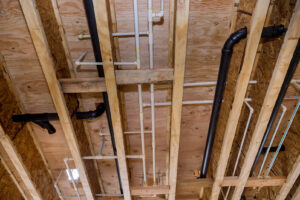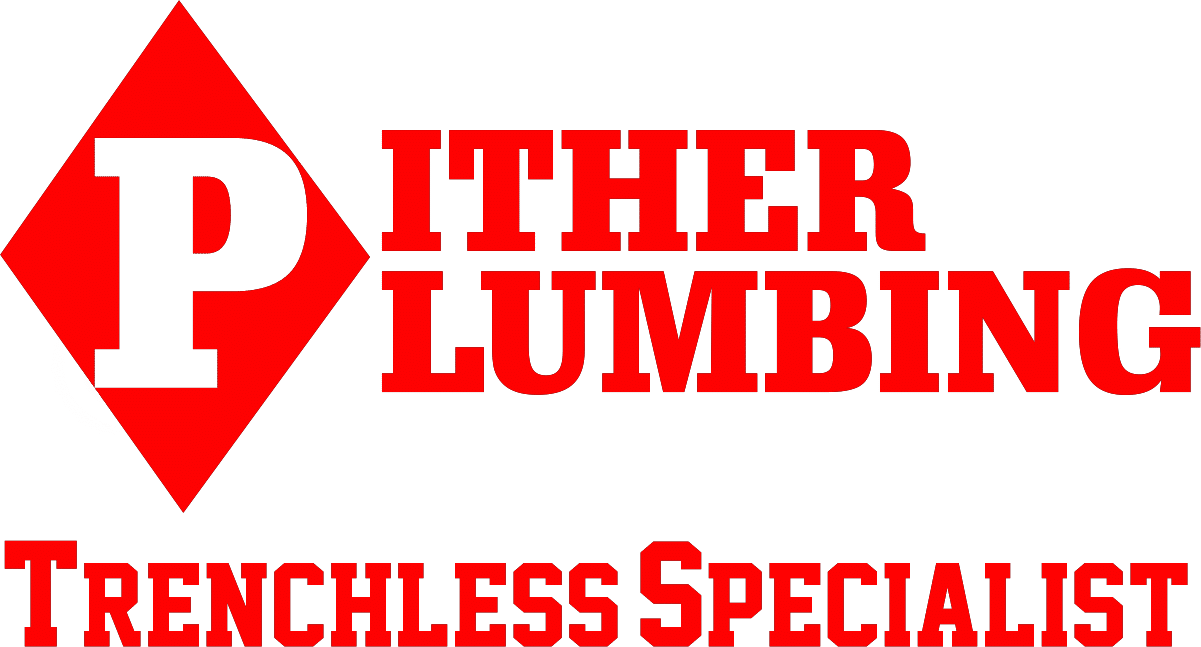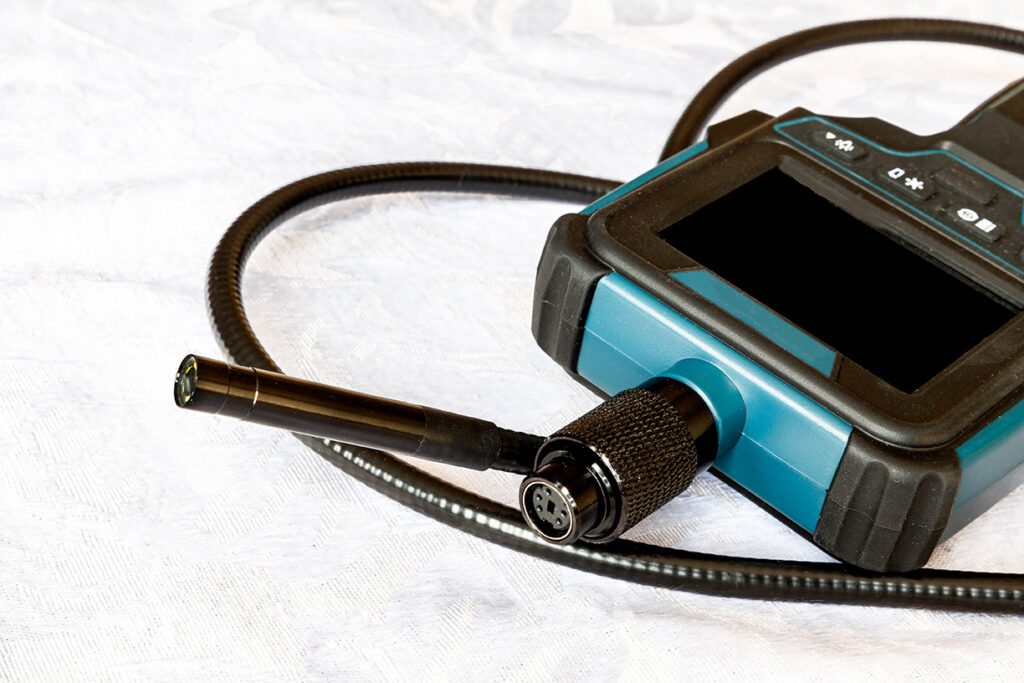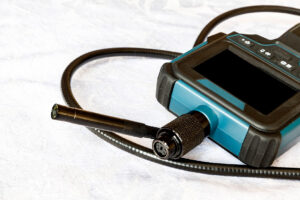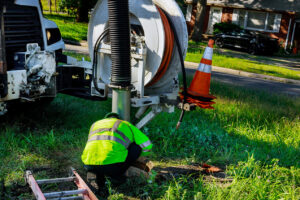Home and commercial property owners in East Texas face hidden plumbing challenges—from slow drains to collapsed sewer lines. A plumbing video camera inspection delivers real-time, high-resolution visuals of pipes deep underground or behind walls, enabling precise diagnosis and reducing unnecessary excavation. In this article, you will discover how this service works, why it is crucial for East Texas soils and infrastructure, the key advantages of non-invasive pipe scanning, common warning signs, Pither Plumbing’s cutting-edge technology, tailored residential and commercial applications, cost factors, scheduling steps, and answers to top customer concerns.
What Is Plumbing Video Camera Inspection and How Does It Work?
A plumbing video camera inspection is a non-invasive diagnostic service that uses a waterproof, high-definition camera mounted on a flexible rod to traverse pipelines and relay live footage to a monitor. By sending the camera through a cleanout or access point, technicians can identify leaks, cracks, blockages, root intrusions, corrosion, and pipe misalignments without digging or demolition. This approach combines visual clarity with precision mapping, allowing plumbers to pinpoint the exact location and severity of issues before recommending targeted repairs.
What Equipment Is Used in Plumbing Video Camera Inspections?
The core tools for a video camera inspection include a self-leveling, waterproof sewer camera head; a push-rod or reel assembly; an articulating guide; and a high-resolution monitor with recording capabilities.
Before deploying the system, technicians calibrate the camera’s tilt and brightness settings to adapt to dark, wet environments. Integrated sonde transmitters and locator devices further enable above-ground pinpointing of buried pipe paths, ensuring accurate mapping of problems.
How Does Real-Time Video Help Diagnose Pipe Problems?
Real-time video feed turns abstract symptoms into clear visual evidence by revealing the exact nature of pipe damage as it happens.
- When grease buildup or debris causes clogs, the camera shows the material’s color, consistency, and blockage pattern.
- Cracks appear as hairline separations or misaligned pipe joints under inspection lighting.
- Root intrusion is characterized by fibrous strands penetrating pipe walls, often accompanied by soil granules.
Immediate visualization supports faster decision-making, ensuring repairs address the root cause rather than surface symptoms.
What Types of Pipes and Lines Can Be Inspected?
Piping systems suited for video camera inspection include:
- Residential and commercial sewer lines,
- Kitchen and bathroom drain lines,
- Stormwater and underground overflow pipes,
- Industrial process piping within accessible vaults or cleanouts.
Inspection scopes adapt to pipe diameters ranging from 1½ inches for sink drains up to 24 inches for large sewer mains, and can navigate rigid PVC, cast iron, clay, and concrete materials. Understanding pipe composition and diameter guides equipment selection and inspection strategy for optimal image quality and coverage.
Why Is Video Camera Inspection Essential for East Texas Properties?
Video camera inspection addresses unique regional challenges, including expansive clay soils, aggressive root growth, and aging infrastructure common throughout East Texas towns such as Longview and Tyler. These factors accelerate pipe shifting, joint separation, and blockages that often remain hidden until severe symptoms surface.
How Do East Texas Clay Soils Affect Plumbing Systems?
Clay soils expand and contract with moisture fluctuations, imposing lateral pressure on buried pipes and causing sagging or joint separation over time. Video inspections reveal early-stage distortions and settling before structural failures lead to backups or collapses. Identifying soil-induced stress points allows preemptive reinforcement or relining of vulnerable pipe sections.
The Impact of Soil on Plumbing Systems
Expansive clay soils, common in East Texas, can significantly impact plumbing systems. The expansion and contraction of these soils due to moisture fluctuations can exert lateral pressure on buried pipes, leading to issues like sagging and joint separation over time. This can result in structural failures and potential backups.
US Geological Survey
This research supports the article’s claims about the effects of East Texas clay soils on plumbing infrastructure.
What Role Do Tree Roots Play in Sewer Line Damage?
Tree roots in East Texas seek moisture and nutrients by infiltrating tiny cracks or compromised joints, eventually causing full-diameter blockages and pipe fractures. Camera footage differentiates superficial root hairs from advanced root masses that require mechanical cutting, hydro-jetting, or trenchless repair methods. Addressing root intrusion based on precise location reduces repeat failures.
Why Are Older Homes in East Texas More Prone to Hidden Plumbing Issues?
Homes built before modern cast-iron and PVC standards often rely on terracotta, clay, or thin-walled cast-iron piping, subject to corrosion and collapse after decades of service. Video inspections in older properties uncover deteriorated pipe segments, collapsed bellies, and obstructions that are invisible to traditional dye-test or pressure-test methods. Early detection preserves landscape and avoids extensive excavation.
What Are the Key Benefits of Plumbing Video Camera Inspection?
Video camera inspection delivers unmatched accuracy, cost savings, speed, and preventative insights compared to conventional exploratory digging.
How Does Video Inspection Provide Accurate Diagnosis?
Video inspection pinpoints the exact location, type, and extent of issues by visualizing internal pipe conditions.
A single inspection can distinguish:
- Leaksas water seepage tracking visible along a seam,
- Cracksas linear separations with defined edges,
- Clogsas accumulated debris with characteristic textures,
- Root Intrusionas fibrous masses disrupting flow.
Such detail ensures that repairs target only affected sections, preserving sound pipe and landscaping.
Why Is Non-Invasive Inspection Better Than Traditional Methods?
Non-invasive inspection requires no uncontrolled digging, eliminating disruption to driveways, lawns, and foundations. Property owners benefit from preserved landscaping and reduced labor costs tied to excavation, while technicians maintain safety by avoiding collapse-prone trenches. The minimal-footprint approach respects homeowner investment and accelerates turnaround.
Benefits of Non-Invasive Inspection
Non-invasive video inspections offer several advantages over traditional methods. They pinpoint the exact location and nature of issues, reducing the need for extensive digging and minimizing disruption to property owners. This approach saves time and reduces repair costs by targeting only the affected sections.
Pither Plumbing
This citation supports the article’s claims about the benefits of video camera inspections.
How Does Video Inspection Save Time and Reduce Repair Costs?
By identifying the precise repair location on first examination, video inspections cut diagnostic phases from days to hours.
Table: Inspection vs. Traditional Dug Repair
Method | Diagnostic Precision | Disruption Level | Typical Cost Range |
Video Camera Inspection | Exact segment mapping | Minimal, no digging | 25–30% less overall |
Exploratory Excavation | Broad area exposure | High, extensive digs | 40–60% more labor |
Can Video Inspections Help with Preventative Maintenance?
Regular video inspections form a pipe health baseline, detecting minor wear, early corrosion, and small root intrusions before they escalate. Scheduled scans—annually or bi-annually—integrate into preventive maintenance programs, extending pipe life and preventing emergency breakdowns. Routine assessments also inform long-term budgeting for infrastructure upgrades.
How Can Lost Valuables Be Retrieved Using Camera Inspection?
When items like rings or small tools slip down drains, camera inspections locate their precise position within the pipeline. Guided retrieval tools can then recover these valuables without invasive pipe removal, turning a frustrating loss into a quick resolution while preserving piping integrity.
What Are the Common Signs You Need a Plumbing Video Camera Inspection?
Awareness of early warning signals empowers property owners to act before major failures occur.
Before listing specific signs, consider the variety of symptoms that indicate hidden issues requiring a closer look.
- Slow drainage across multiple fixtures suggests deep blockages or pipe collapse.
- Foul, persistent sewer odors often emanate from cracks or backed-up sewage zones.
- Recurring sewer backups or foul discharges in toilets indicate structural or root-related obstructions.
- Unexplained water pooling or soggy patches in yard areas reveal underground leaks escaping soil containment.
- Sudden spikes in water bills point to undetected manifold leaks beneath slabs or inside walls.
- Pre-purchase inspections or renovation plans should include video scanning to avoid surprises in concealed plumbing.
How Does Pither Plumbing’s Advanced Camera Technology Improve Inspection Accuracy?
Pither Plumbing employs HD, self-leveling sewer cameras with 360° pan-and-tilt capabilities and integrated sonde transmitters to map pipe runs in real time. This equipment delivers crystal-clear imaging in pipes up to 24 inches in diameter and records continuous footage for documentation.
What Are the Features of the HD, Self-Leveling Sewer Cameras?
- Auto-leveling headsthat maintain upright orientation regardless of rod angle,
- 1080p resolutionfor detailed visualization of hairline cracks and root fibers,
- Integrated LED arraysadjustable for varying pipe conditions,
- Wireless data linksfor live streaming and on-site playback.
How Do Technicians Interpret Video Footage for Precise Diagnosis?
Experienced technicians analyze footage frame-by-frame, noting pipe material changes, joint separations, corrosion patterns, and foreign object profiles. Body-of-knowledge on East Texas pipe failures guides correlation between visual findings and likely causes—enabling tailored repair plans rather than generic solutions.
What Makes Pither Plumbing’s Technology Superior to DIY or Older Methods?
Unlike consumer-grade sewer scopes that lack sonde transmitters and stabilization, Pither Plumbing’s professional systems ensure accurate depth readings, orientation data, and continuous recording. This advanced equipment, combined with technician expertise, minimizes misdiagnoses and unnecessary service calls.
How Are Plumbing Video Camera Inspections Tailored for Residential and Commercial Properties?
Inspection strategies adjust to differing scale, code requirements, and operational continuity needs across homes and businesses.
What Are the Unique Needs of Homeowners for Camera Inspections?
Homeowners typically require rapid assessments for kitchen and bathroom drains, slab leaks, and yard seepage. Pither Plumbing’s residential service packages include standard camera scans for two to three fixture lines, with optional whole-house evaluations to establish system health.
How Do Commercial Businesses Benefit from Specialized Camera Inspections?
Commercial properties often feature extensive, multi-level drain networks subject to health codes and business uptime demands. Customized camera routes focus on grease trap lines, floor drains, and service mains, with detailed compliance reporting to support regulatory requirements.
How Does Inspection Minimize Disruption for Businesses?
Scheduled after-hours or weekend inspections use compact, no-dig equipment to avoid obstructing customer areas. Wireless monitoring allows managers to review footage without a second on-site visit, preserving daily operations and reducing lost revenue.
What Factors Influence the Cost of Plumbing Video Camera Inspection in East Texas?
Inspection pricing reflects pipe length, access complexity, required depth mapping, and any complementary services like hydro-jetting to clear obstructions before scanning.
How Does Pipe Length and Accessibility Affect Inspection Pricing?
Longer pipe runs require extended rod assemblies and longer inspection time, while deep or hard-to-reach access points increase labor. Cleanout–based scans start at a base rate, with incremental charges per additional foot of rod.
Why Might Additional Services Like Hydro-Jetting Impact the Total Cost?
Stubborn blockages must often be cleared before camera insertion to ensure clear visuals. Hydro-jetting dissolves grease and debris, adding equipment and labor to the invoice but preventing multiple site visits.
How Can You Request a Transparent Quote from Pither Plumbing?
To receive a detailed estimate, contact Pither Plumbing with approximate square footage, pipe age, and location of access points. Technicians will provide a breakdown of base fees, footage costs, and any auxiliary service options tailored to your property.
What Is the Step-by-Step Process for Scheduling and Completing a Plumbing Video Camera Inspection?
Understanding each phase ensures a smooth experience from first contact to final report.
- Initial ConsultationProvide property details and describe symptoms to Pither Plumbing’s scheduling team.
- On-Site AssessmentTechnician locates access points, measures distances, and confirms service scope.
- Camera DeploymentInsert the camera into the cleanout or access point; adjust lighting and recording settings.
- Live InspectionReview real-time footage with homeowner or facility manager, noting problem locations.
- Report DeliveryReceive detailed digital report with time-stamped images, video clips, and recommended solution plan.
After report review, Pither Plumbing can proceed with targeted repairs or schedule follow-up preventive scans.
How Can You Schedule Your Plumbing Video Camera Inspection with Pither Plumbing Today?
Scheduling is simple and convenient. Call Pither Plumbing’s East Texas service line or complete the online form on the website to request an appointment. After booking, expect a confirmation call outlining preparation steps, estimated arrival window, and contact details for your technician.
A clear diagnostic path begins with a single call—eliminate guesswork, protect your property, and gain peace of mind by arranging your plumbing video camera inspection now.
Plumbing video camera inspection transforms unseen pipe problems into clear visual insights, dramatically reducing repair time, cost, and property impact. By leveraging advanced HD technology, real-time analysis, and local expertise in East Texas soil and infrastructure conditions, Pither Plumbing ensures accurate diagnostics and tailored solutions for homes and businesses alike. Whether you face recurring clogs, foul odors, or planning a renovation, immediate inspection safeguards your investment. Contact Pither Plumbing today to secure your non-invasive diagnostic appointment and prevent minor issues from becoming major repairs.
